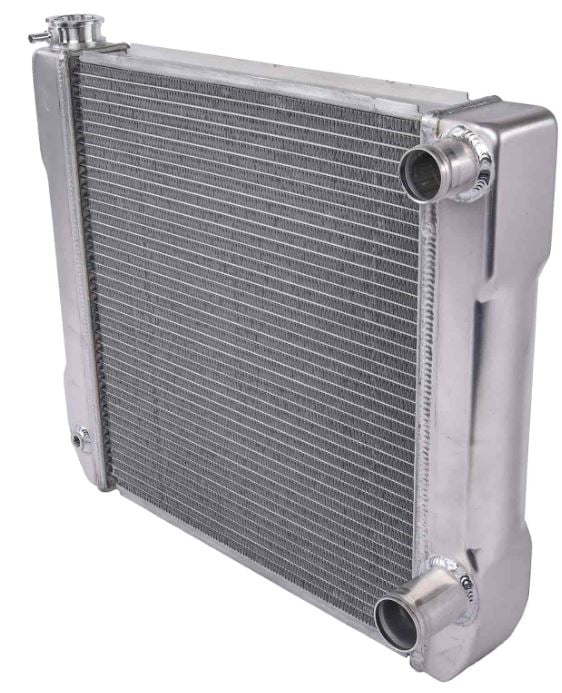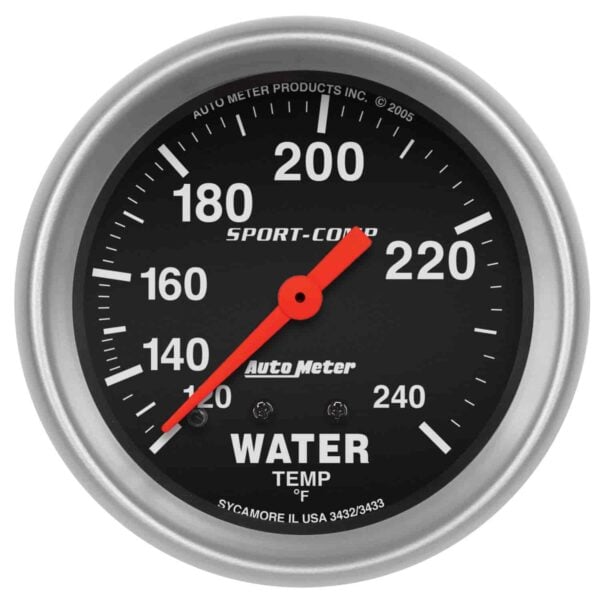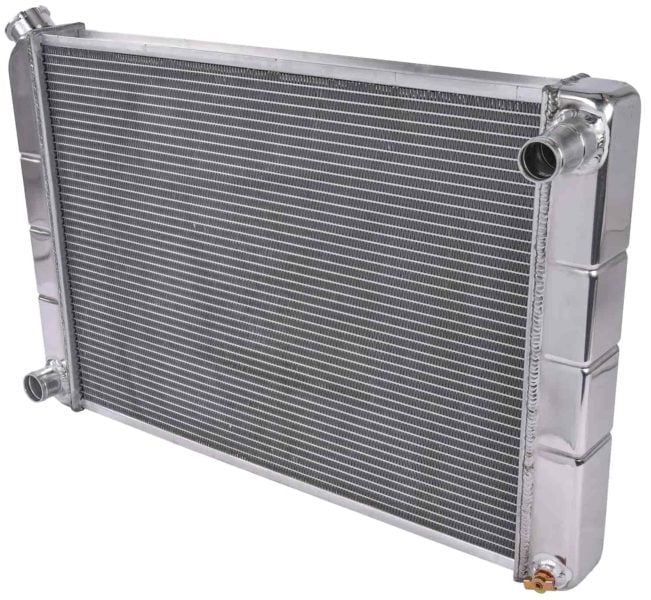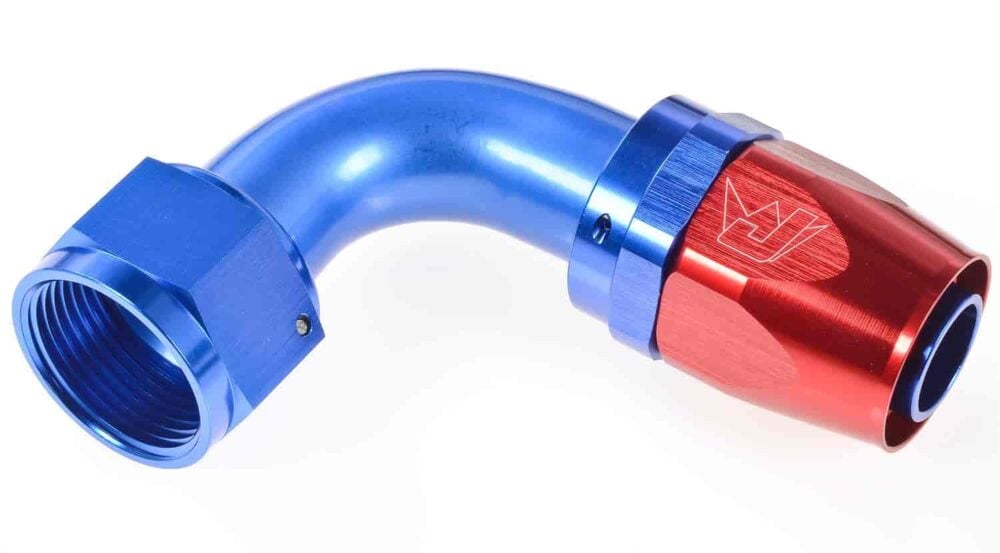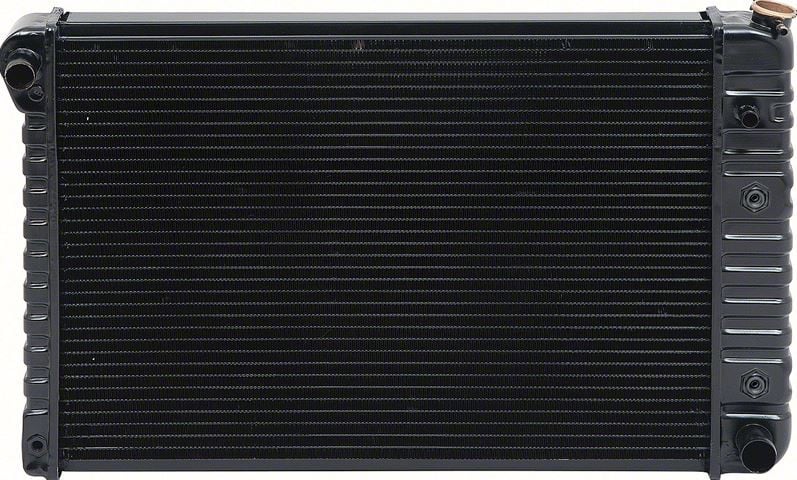
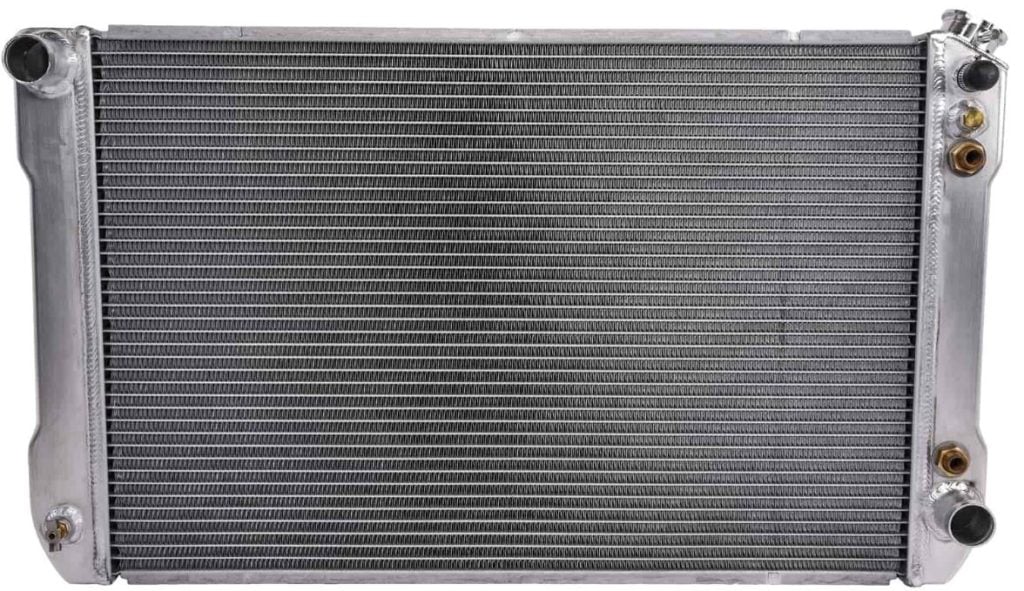
Since the beginning of car manufacturing, the first materials used for producing radiators were brass and copper. Those materials were primarily used due to their ability to conduct heat and maintain a consistent operating temperature. In the early 1970s, Volkswagen shifted from air-cooling radiators to liquid-cooling radiators, which was followed by the automotive industry’s research and demand for lighter materials. Eventually, this resulted in the manufacturing of aluminum radiators.
In this article, we’ll cover the benefits of each type, what’s the best material for a radiator, and what you need to consider before buying one.
Benefits of Copper Radiators
Copper was the first choice as the best material for making radiators due to its inherent conductivity. Low energy consumption for manufacturing high-quality products also took part in choosing copper as a primary material.
With the development of technology, it is possible for manufacturers to adapt and make them thinner and lighter – up to around 30% lighter – compared to original copper radiators. With less material used to produce newer models of copper radiators combined with brazing instead of lead soldering in previous models, modern copper radiators are a fair match to aluminum radiators. Lead-free alloy is used for brazing in newer models of copper radiators, which also makes it less prone to corroding.
Copper is also one of the most recyclable materials in the world, which means that the same material can be 100% used from scrapped vehicles and made into new radiators and radiator parts. Scrap from aluminum radiators can only be used as casting alloy, new radiators can not be produced from the same material.
While aluminum radiators are the best material for a radiator in the automotive industry, copper and brass radiators are still used in classic vehicles.
Copper radiators are easier to manufacture, and also easier to clean and repair, unlike aluminum radiators for which you need an expert in order to maintain them when needed. Also, copper radiators have better heat transfer ability, which makes cooling faster.
Benefits of Aluminum Radiators
Aluminum as a raw material is almost twice as affordable compared to copper and brass, which made it more effective to use cost-wise, both for manufacturers and consumers. And with the automotive industry working on building lighter vehicles by choosing lighter materials that can also be used in thinner forms making them lighter or even smaller, we see why vehicle manufacturers are choosing aluminum radiators that are up to 60% lighter in weight compared to brass and copper radiators.
Over time, aluminum radiators started using plastic tanks that are more capable of mirroring complex OE shapes, allowing them to fit and be adaptable to the modern automotive industry needs.
While copper and brass radiators have cores and headers that are soldered together, it was shown that dissimilarity of materials caused by soldering is more prone to corrosion. In comparison, aluminum radiators are brazed together in one unified piece, which makes them less prone to corrosion.
As a material, aluminum can be used in a thinner form, resulting in manufacturing wider tubes and by that allowing better and faster heat exchange therefore aluminum radiators are more efficient. Also, in addition to wider tubes, the overall core is thinner, which provides better surface contact with fins, making heat transfer even faster.
Aluminum is a stronger metal, adaptable to vibration, and is more durable in most environments. Unlike brass and copper, which are less resistant to pressure and damage, that makes them vulnerable to vibration and even self-damage in application processes.
Manufacturers of brass or copper radiators decided to extend research on how to make their products lighter and cheaper, trying to adapt to modern vehicles, and by doing so they are still being used by a large number of consumers, especially those with older classic cars. But even with all the benefits that copper and brass radiators have had for decades, nowadays aluminum radiators have less warranty return rate, meaning they’re more dependable.
In the end, we can conclude that aluminum radiators are lighter in weight, less prone to corrosion, more durable, and last longer in nearly any environment, less expensive for manufacturing and consumers, and are more suited for modern cars and trucks.
Why Isn’t Steel Used For Manufacturing Car Radiators?
Steel as a material is not suitable for manufacturing radiators for the automotive industry for a wide variety of reasons. First of all, steel is harder and more resistant to pressure and high temperatures in comparison to copper and brass, which makes it durable but also not conductive enough for heat transmission. Copper has a much better ability to conduct heat compared to steel, which would make cooling harder if steel would be used as the primary material for radiator production.
Heavier products in the automotive industry are not the goal. Lighter products will eventually lead to lighter vehicles, making their performance better. Also, considering that steel is a material that will corrode faster than copper or aluminum, these are the logical choice. For these reasons, steel was never used for manufacturing radiators for the automotive industry.
Considering Your Needs
Depending on what you are looking after, you need to consider the pros of both copper and aluminum radiators in order to decide which one is better for your needs. Aluminum radiators are stronger and lighter than copper radiators, they resist more damage than copper radiators, they are cheaper to produce, but copper radiators are 100% recyclable and better heat conductors, and copper radiators have the advantage of being easier to produce and maintain. Nevertheless, the final decision will probably be affected only by vehicle type and the ability of the radiator to adapt for the use of your vehicle. As technology continuously provides better ways for materials to be used in new and better ways, we are yet to see which material will become the best material for radiators in the automotive industry.
Whether you need a copper or brass radiator, or an aluminum one, it’s important to use certified and trustworthy parts. JEGS has an extensive catalog of car radiators from a variety of manufacturers, and radiators of different shapes, and sizes, meant for OE replacement or performance applications.
